To Japan With The Ball Team
Last week marked the 108th anniversary of the University of Wisconsin baseball team’s 1909 good will trip to Japan. UW baseball played Japanese ball clubs three times in the early 20th century, first traveling all the way to Tokyo to play the Universities of Keio and Waseda, and later hosting the same schools in Madison in 1911, and 1916.

“With the approval of the faculty and the energetic efforts of Genkwan Shibata the Japan Ball Trip became a reality in place of a mere possibility,” wrote shortstop Oswald Lupinkski in the February 1910 edition of The Wisconsin Engineer. Lupinski’s write-up of the trip, “To Japan With The Ball Team,” is a detailed account of the team’s journey, the sights they took in in Japan, and the impressions of a young, college-aged Wisconsinite spending two months traveling abroad with his friends in 1909. The trip was organized in large part by Genkwan Shibata, a senior in the Commerce Department, and the first Japanese Phi Beta Kapa at UW. Clearly the honor was well deserved, as Shibata negotiated with officials at Keio University, and persuaded them to pay the entire $4,000 expense to bring the UW Ball Team to Japan to play eleven games.

The ball club departed for the west coast on August 20th with Shibata, known affectionately by the team as “Shibby,” as the team’s business manager and translator. Representing the university and acting as manager of the team was professor of political science Dr. Charles McCarthy, best known today for creating the nation’s first legislative reference library, and his singular contribution to the development of the “Wisconsin Idea.” A star athlete in his own right, McCarthy was named to the 1896 All-American football team during his final year at Brown University.
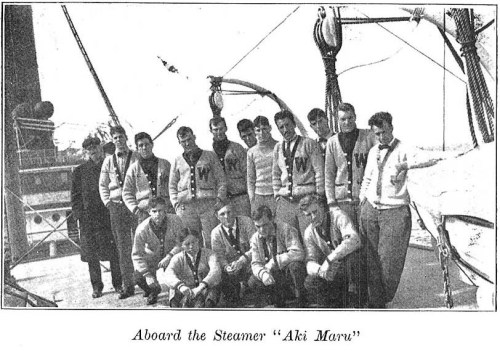
The team boarded the Aki Maru steamer from Seattle on the 31st of August, and arrived in Tokyo Bay on September 16th. After about two weeks at sea, the team from Wisconsin was greeted at port by their counterparts from Keio University, and whisked away to their hotel by rickshaw. They made a brief appearance at Keio University, where a crowd of 500 students greeted them. After spending so much time at sea, the boys from Wisconsin were treated to a whirlwind introduction to Tokyo. “Everyone wore a blank, astonished look upon his face and this is about what it expressed: ‘What in the world has happened to us,’” Lupinski wrote, “so much had occurred in a few hours, that none of us actually realized where we were or what had happened.”
The first game against Keio took place on September 22nd. It was reported that over ten-thousand spectators came to watch Keio prevail in extra innings by a score of 3-2. Weather permitted Wisconsin to play only nine of the eleven scheduled games between September 22 and October 12. They went 5-4, with one victory over a team of Americans living in Tokyo. Their 4-4 record against Japanese opponents was glibly described by campus historians Curti and Carstensen as “diplomatically impeccable.”

Wisconsin hosted both Keio and Waseda in 1911. Waseda arrived first and was treated to quite a reception, including “a spirited banquet, automobile rides, and the spring water carnival.” A large crowd attended the game at Camp Randall, and Governor Francis McGovern “opened the game like most dignitaries, with a wild pitch to the back-stop net.” Keio arrived in Madison a week later, but with only a few days before exams were not given quite the same, rousing reception as Waseda. UW won both games against Waseda, but lost their only game against Keio. In 1916 Waseda again made the trip, well documented through photographs, but without mention of any festivities or special events for the final meeting between the two schools. Wisconsin again swept Waseda, two games to none.
There was a special bond shared among the members of the 1909 team that traveled to Japan. Upon their return to the United States, the members of the team collectively purchased a gold watch for Genkwan Shibata and inscribed it “To Shibby, from the bunch. Japan team, 1910.” In 1934, all members of the team still living, they had a reunion during homecoming week. In 1938, Shibata passed away in Kobe, Japan, and a memorial plaque was sent to his widow with the names of the ’09 team inscribed upon it.
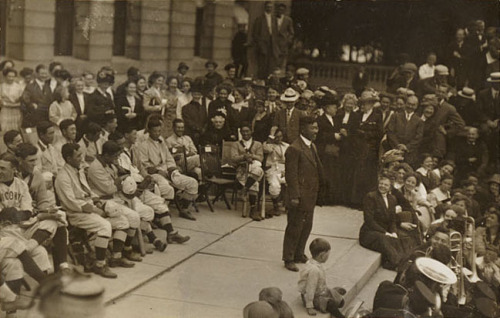
Waseda visiting in 1911
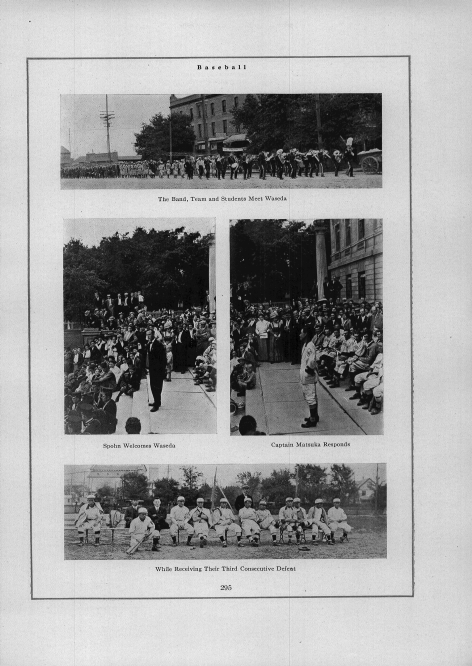
Waseda visiting in 1911

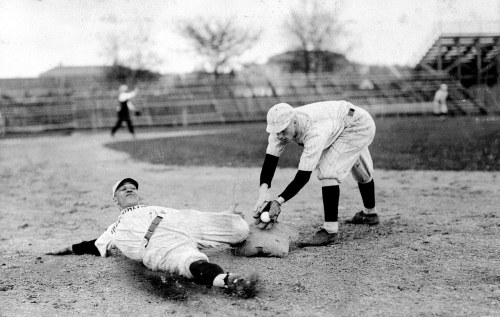
1916 Waseda visit
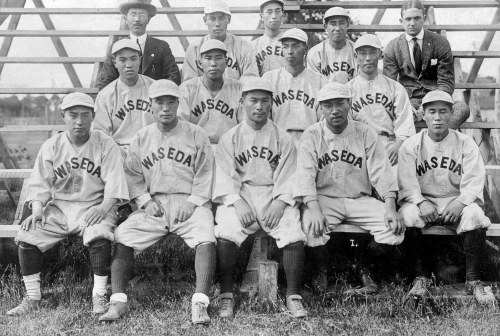
1916 Waseda Ball Team
-Logan Rains, Library Services Assistant, UW-Madison Archives
**********
For more information about UW campus history, contact uwarchiv@library.wisc.edu or visit library.wisc.edu/archives. On, Wisconsin!

